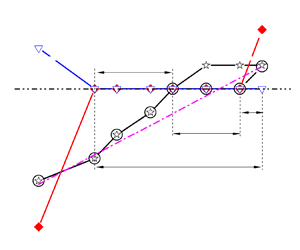Open access
Contents
JFM Papers
Revisiting Brenner's method for Stokes resistance of a deformed sphere
-
- Published online by Cambridge University Press:
- 20 September 2024, A17
-
- Article
-
- You have access
- Open access
- HTML
- Export citation
Particle chirality does not matter in the large-scale features of strong turbulence
-
- Published online by Cambridge University Press:
- 20 September 2024, A10
-
- Article
-
- You have access
- Open access
- HTML
- Export citation
Triglobal resolvent-analysis-based control of separated flows around low-aspect-ratio wings
-
- Published online by Cambridge University Press:
- 20 September 2024, A13
-
- Article
-
- You have access
- Open access
- HTML
- Export citation
Instability dynamics of viscous fingering interaction on dual displacement fronts
-
- Published online by Cambridge University Press:
- 20 September 2024, A5
-
- Article
-
- You have access
- Open access
- HTML
- Export citation
Heat-transfer effects in compressible turbulent boundary layers – a regime diagram
-
- Published online by Cambridge University Press:
- 20 September 2024, A14
-
- Article
-
- You have access
- Open access
- HTML
- Export citation
Parametric oscillations of the sessile drop
-
- Published online by Cambridge University Press:
- 19 September 2024, A3
-
- Article
-
- You have access
- Open access
- HTML
- Export citation
Self-similarity and recurrence in stability spectra of near-extreme Stokes waves
-
- Published online by Cambridge University Press:
- 19 September 2024, A2
-
- Article
-
- You have access
- Open access
- HTML
- Export citation
Swirling electrolyte. Part 2. Secondary circulation and its stability
-
- Published online by Cambridge University Press:
- 19 September 2024, A8
-
- Article
-
- You have access
- Open access
- HTML
- Export citation
Fluid–acoustic–structure resonance mechanism of a plane cascade via a low-speed wind tunnel test
-
- Published online by Cambridge University Press:
- 19 September 2024, A7
-
- Article
-
- You have access
- Open access
- HTML
- Export citation
Self-similarity and the direct (enstrophy) cascade in forced two-dimensional fluid turbulence
-
- Published online by Cambridge University Press:
- 19 September 2024, A4
-
- Article
-
- You have access
- Open access
- HTML
- Export citation
Detachment of leading-edge vortex enhances wake capture force production
-
- Published online by Cambridge University Press:
- 19 September 2024, A6
-
- Article
-
- You have access
- Open access
- HTML
- Export citation
Experimental investigation of three-dimensional Rayleigh–Taylor instability of a gaseous interface
-
- Published online by Cambridge University Press:
- 18 September 2024, A7
-
- Article
-
- You have access
- Open access
- HTML
- Export citation
Attracting dynamical modes of highly elastic fibres settling under gravity in a viscous fluid
-
- Published online by Cambridge University Press:
- 18 September 2024, A13
-
- Article
-
- You have access
- Open access
- HTML
- Export citation
JFM Rapids
On the three-dimensional structure of instabilities beneath shallow-shoaling internal waves
-
- Published online by Cambridge University Press:
- 18 September 2024, R2
-
- Article
-
- You have access
- Open access
- HTML
- Export citation
Modon solutions in an N-layer quasi-geostrophic model
-
- Published online by Cambridge University Press:
- 18 September 2024, R1
-
- Article
-
- You have access
- Open access
- HTML
- Export citation
JFM Papers
Stratified Resistive Tearing Instability
-
- Published online by Cambridge University Press:
- 18 September 2024, A3
-
- Article
-
- You have access
- Open access
- HTML
- Export citation
Negative available potential energy dissipation as the fundamental criterion for double diffusive instabilities
-
- Published online by Cambridge University Press:
- 18 September 2024, A5
-
- Article
-
- You have access
- Open access
- HTML
- Export citation
Collision of liquid drops: bounce or merge?
-
- Published online by Cambridge University Press:
- 18 September 2024, A1
-
- Article
-
- You have access
- Open access
- HTML
- Export citation
An experimental study of a quasi-impulsive backwards wave force associated with the secondary load cycle on a vertical cylinder
-
- Published online by Cambridge University Press:
- 18 September 2024, A9
-
- Article
-
- You have access
- Open access
- HTML
- Export citation
JFM Rapids
Coupled unsteady actuator disc and linear theory of an oscillating foil propulsor
-
- Published online by Cambridge University Press:
- 18 September 2024, R1
-
- Article
-
- You have access
- Open access
- HTML
- Export citation


















































